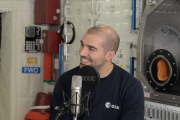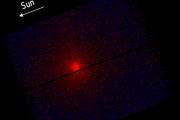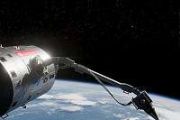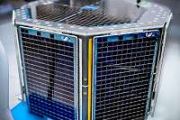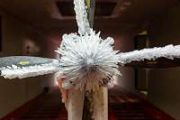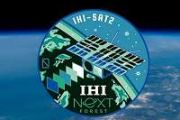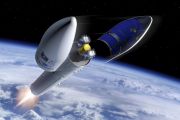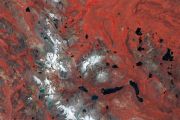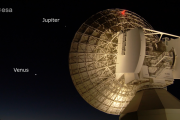
Copernical Team
End of mission for Atacama Cosmology Telescope opens new avenues in cosmology
 The Atacama Cosmology Telescope (ACT) has concluded nearly two decades of operation, closing a chapter in observational cosmology and initiating new directions for research. The ACT Collaboration has published three major papers in the Journal of Cosmology and Astroparticle Physics (JCAP), detailing the sixth and final ACT data release, which significantly advances knowledge about the evolution
The Atacama Cosmology Telescope (ACT) has concluded nearly two decades of operation, closing a chapter in observational cosmology and initiating new directions for research. The ACT Collaboration has published three major papers in the Journal of Cosmology and Astroparticle Physics (JCAP), detailing the sixth and final ACT data release, which significantly advances knowledge about the evolution Looking inside icy moons
 The outer planets of the Solar System are swarmed by ice-wrapped moons. Some of these, such as Saturn's moon Enceladus, are known to have oceans of liquid water between the ice shell and the rocky core and could be the best places in our solar system to look for extraterrestrial life. A new study published Nov. 24 in Nature Astronomy sheds light on what could be going on beneath the surface of t
The outer planets of the Solar System are swarmed by ice-wrapped moons. Some of these, such as Saturn's moon Enceladus, are known to have oceans of liquid water between the ice shell and the rocky core and could be the best places in our solar system to look for extraterrestrial life. A new study published Nov. 24 in Nature Astronomy sheds light on what could be going on beneath the surface of t BepiColombo nears Mercury orbital arrival after seven year journey
 The ESA and JAXA BepiColombo mission is entering its final year of approach to Mercury, on track to reach orbit in November 2026 after launching in October 2018. The dual-spacecraft mission has already completed one flyby of Earth, two of Venus, and six of Mercury, collecting solar activity and magnetosphere data en route.
Throughout its cruise, BepiColombo measured planetary magnetic envi
The ESA and JAXA BepiColombo mission is entering its final year of approach to Mercury, on track to reach orbit in November 2026 after launching in October 2018. The dual-spacecraft mission has already completed one flyby of Earth, two of Venus, and six of Mercury, collecting solar activity and magnetosphere data en route.
Throughout its cruise, BepiColombo measured planetary magnetic envi Best 7 EV Charging App Development Companies Powering eMobility in 2025
 Electric vehicle adoption has reached a tipping point, transforming from niche market to mainstream transportation choice. This shift creates massive demand for reliable charging infrastructure and the apps that make it accessible.
Electric vehicle adoption has reached a tipping point, transforming from niche market to mainstream transportation choice. This shift creates massive demand for reliable charging infrastructure and the apps that make it accessible. Blue Ring mission to expand commercial GEO space domain awareness
 Blue Origin has reached an agreement with Optimum Technologies (OpTech) to incorporate the Caracal optical payload into the inaugural mission of Blue Ring, a spacecraft designed for multi-mission payload delivery, hosting, and infrastructure support.
The first launch is planned for 2026, beginning in Geostationary Transfer Orbit and then transitioning to Geostationary Orbit to conduct furt
Blue Origin has reached an agreement with Optimum Technologies (OpTech) to incorporate the Caracal optical payload into the inaugural mission of Blue Ring, a spacecraft designed for multi-mission payload delivery, hosting, and infrastructure support.
The first launch is planned for 2026, beginning in Geostationary Transfer Orbit and then transitioning to Geostationary Orbit to conduct furt China launches Shenzhou-22 early for stranded space station crew
 China conducted an urgent unmanned spacecraft launch on Tuesday, after damage to a previous mission's return capsule left the crew on its space station without a means of getting back to Earth.
The Long March-2F rocket carrying Shenzhou-22 lifted off shortly after midday from the Jiuquan Satellite Launch Centre in northwest China, footage from state broadcaster CCTV showed.
Recent Shenzh
China conducted an urgent unmanned spacecraft launch on Tuesday, after damage to a previous mission's return capsule left the crew on its space station without a means of getting back to Earth.
The Long March-2F rocket carrying Shenzhou-22 lifted off shortly after midday from the Jiuquan Satellite Launch Centre in northwest China, footage from state broadcaster CCTV showed.
Recent Shenzh Outage Prevention from Orbit: Why Utilities Are Turning to Satellites and Geospatial Analytics
 Utilities and local energy distribution companies (LDCs) face ongoing challenges in managing their infrastructure. Keeping track of power lines, pipelines, energy plant emissions, and other assets is essential to prevent power outages, wildfires, broken power lines, and methane leaks.
Utilities and local energy distribution companies (LDCs) face ongoing challenges in managing their infrastructure. Keeping track of power lines, pipelines, energy plant emissions, and other assets is essential to prevent power outages, wildfires, broken power lines, and methane leaks. AI is making spacecraft propulsion more efficient, and could even lead to nuclear-powered rockets
Verifying that you are not a bot
Boeing's troubled capsule won't carry astronauts on next space station flight
Verifying that you are not a bot
1st Starship launch on Space Coast could come mid-2026, Space Force official says
Verifying that you are not a bot






